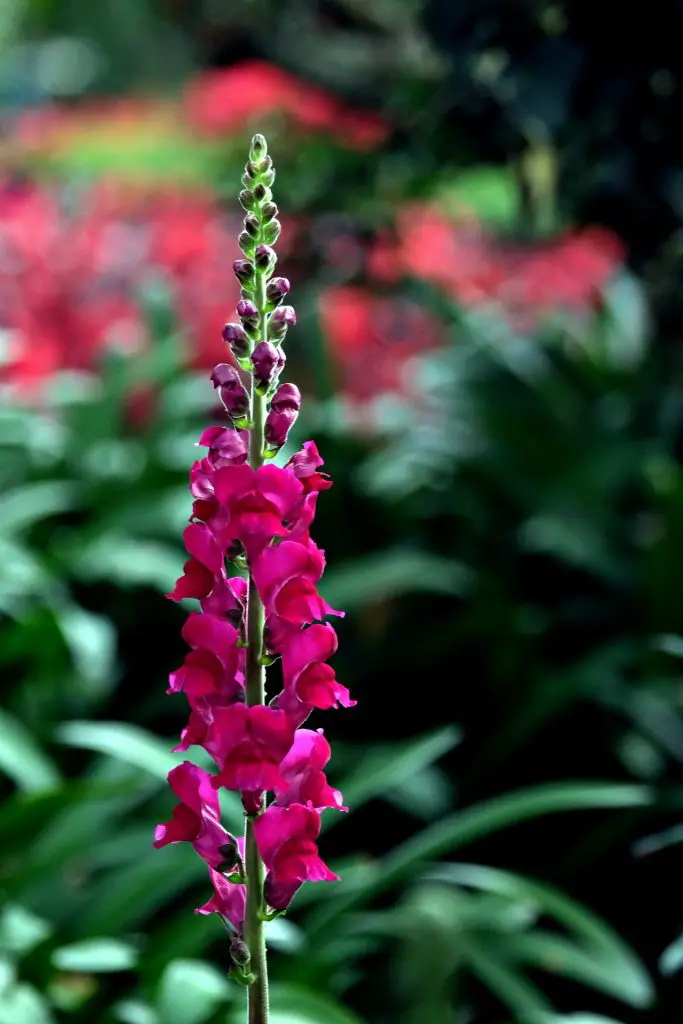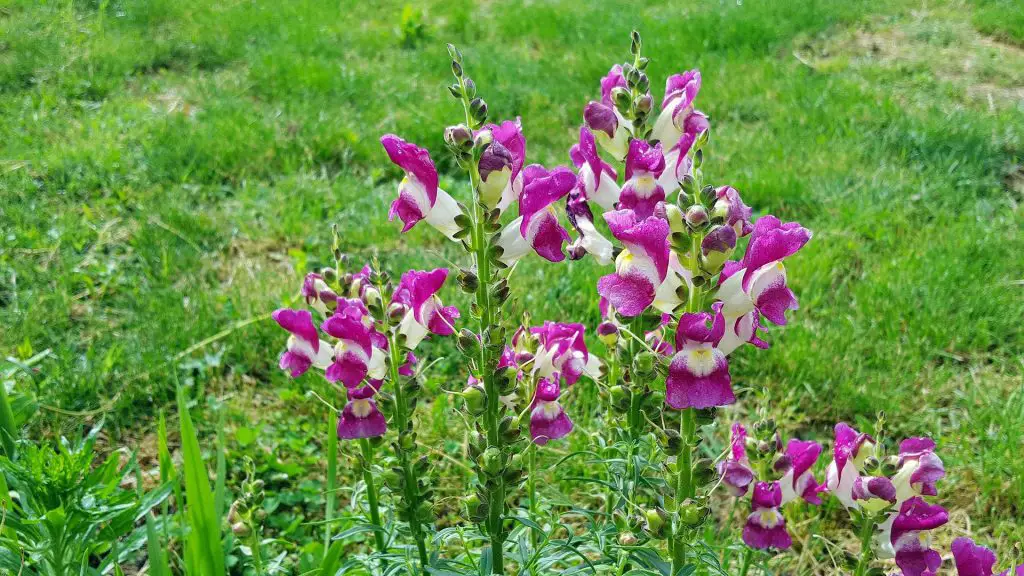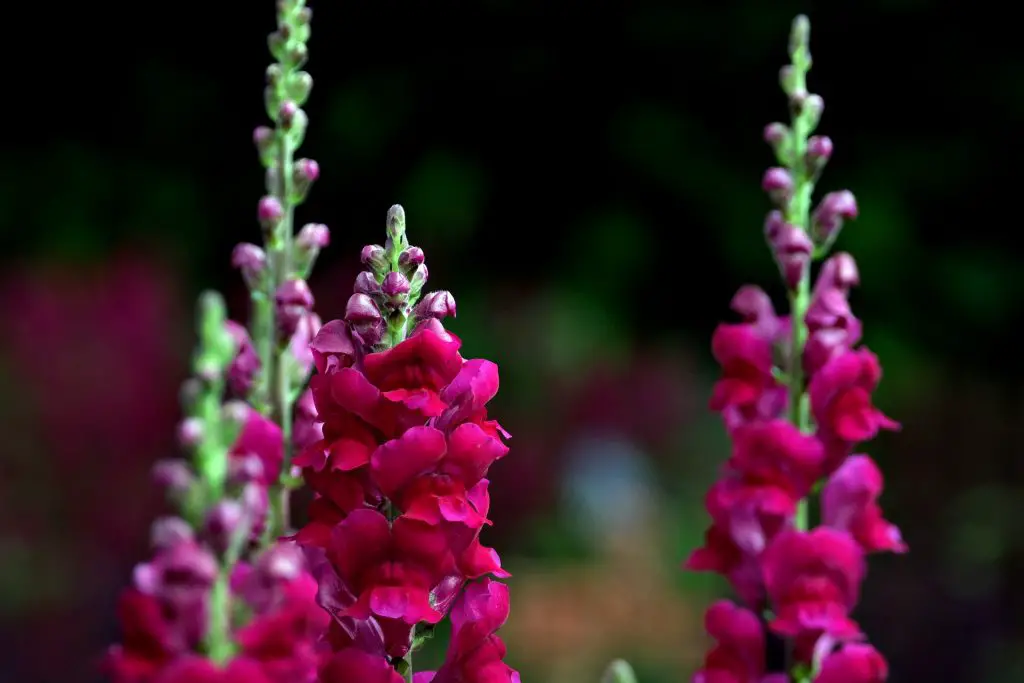Do Snapdragons Spread? Are They Invasive? Snapdragons are a popular plant that in most regions is used as an annual but can also be a perennial in warmer locations. So this plant can be used to fill up existing borders and add a splash of colour throughout the season. However, if you were considering planting them you may be wondering do snapdragons spread and are they invasive?
Snapdragons are generally not considered to spread very much. They can self seed from one season to the next but they are not prolific at doing this compare to other plants such as calendula. Therefore they are generally not considered to spread very much and are not considered invasive in any way.
Plants themselves produce a range of colours which include pinks purples and whites. These plants generally will flower from late spring to early summer and will continue in flowering into the fall depending on your specific weather conditions. The plants are frost sensitive and are generally considered to be hardy only in zones 10 and 11.
However, you can grow these plants in cooler regions by treating them as an annual as mentioned above. Most varieties are relatively small and typically reach a height of 1 to 2 feet tall. Due to their size, they are often used in bedding plants in some regions because they are also highly fragrant.
Additionally, the plants are also non-toxic which is highly beneficial given that they are fairly low-growing plants that animals and toddlers can access fairly easily.

How To Grow Snapdragons
Snapdragon seeds can be planted in midwinter indoors to get them going if you live in a colder region, less than zone 9. This will ensure that you have flowers appearing as early as possible in the season.
To do this start by filling the seed trays with good quality seed raising mix and ensure that you firm soil into the individual cells within the seed tray as this will make it easier to transplant the seedlings later on. When planting the seeds place two seeds per cell at a depth of approximately half an inch as the seeds are relatively small.
Planting two seeds per cell is done to ensure that you have at least one plant coming up in each and every cell. If more than one seed germinates within the cell it is advisable to remove the weaker seedling leaving a single seedling per cell.
Once the seeds are in position the trays should be placed in a relatively warm location that gets a reasonable amount of sunlight to encourage germination to occur relatively quickly. Typically, seedlings will appear after 10 to 14 days, however, this is highly dependent upon the conditions in which you grow the seeds and also the particular variety that is being grown.
The seedlings will need to spend approximately 6 to 8 weeks in the seed tray before they are large enough to be planted out in the garden which should ideally be when the plants are approximately 2 to 3 inches tall.

How To Plant Snapdragons Into The Garden
Snapdragons as mentioned earlier in the article are frost-sensitive plants that can only be planted once all risk frost has passed. Once conditions are favourable snapdragons should be planted out into the garden approximately 6 to 10 inches apart in a location that gets at least 6 to 8 hours of sun per day.
As the plant is relatively small it is a good idea to plant them in a group of plants rather than planting just a single plant dotted throughout your garden as this will provide a more striking display.
In terms of soil conditions, snapdragons ideally prefer relatively rich, moist, and free-draining soil that has plenty of nutrients to help encourage the formation of flowers throughout the season. If your soil is a little bit impoverished you may consider adding an additional bag of compost to the garden.
Once the plants are in position it is also a good idea to apply a layer of mulch approximately 2 to 4 inches thick as this will help to retain moisture around the plants and encourage them to grow while suppressing weeds which will compete for nutrients.

When the plants have become established there are only a few things that you need to do to keep them flowering throughout the season. The first is to ensure that you water the plants regularly, particularly in hot conditions, to ensure that they have plenty of moisture. Secondly, it is advisable that the flowers are deadheaded once the blooms are finished as this will ensure that the plant will continue to flower throughout the season.
When removing the flowers it is important to cut the flowers down just above the next node as this will encourage the plant to become progressively bushier and produce more and more flowers throughout the season.
I hope you found this article useful in have great success growing snapdragons at home in your own garden, if you have any additional comments or questions please leave them in the section below.
Relevant Articles
Do Marigolds Keep Deer Away? Do They Really Work?
Is Calendula The Same As A Dandelion?
What Is The Difference Between Lavender And Rosemary? And How To Tell Them Apart
Can Snowdrops Be Purple or Blue? Or Is There A Similar Looking Flower?
